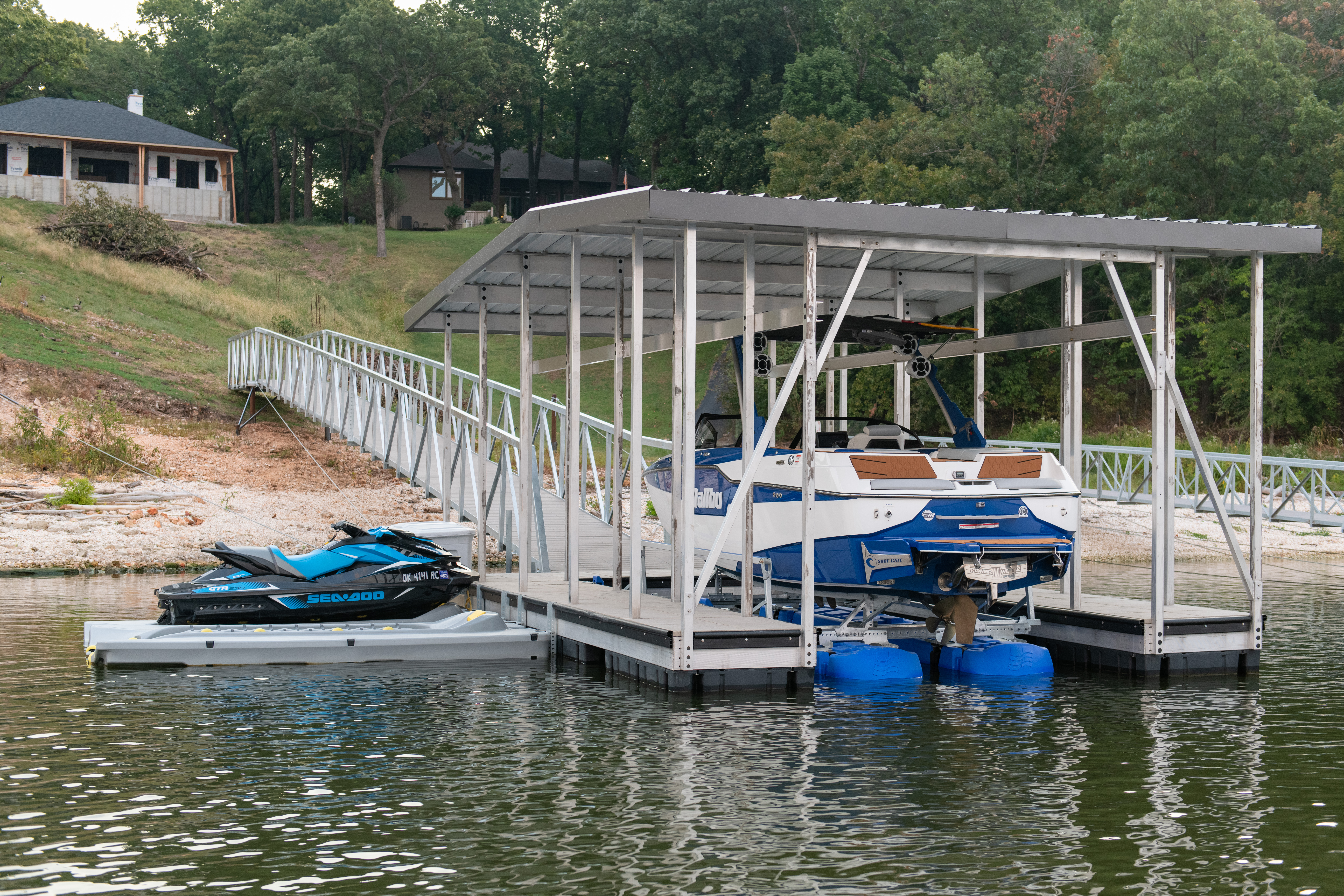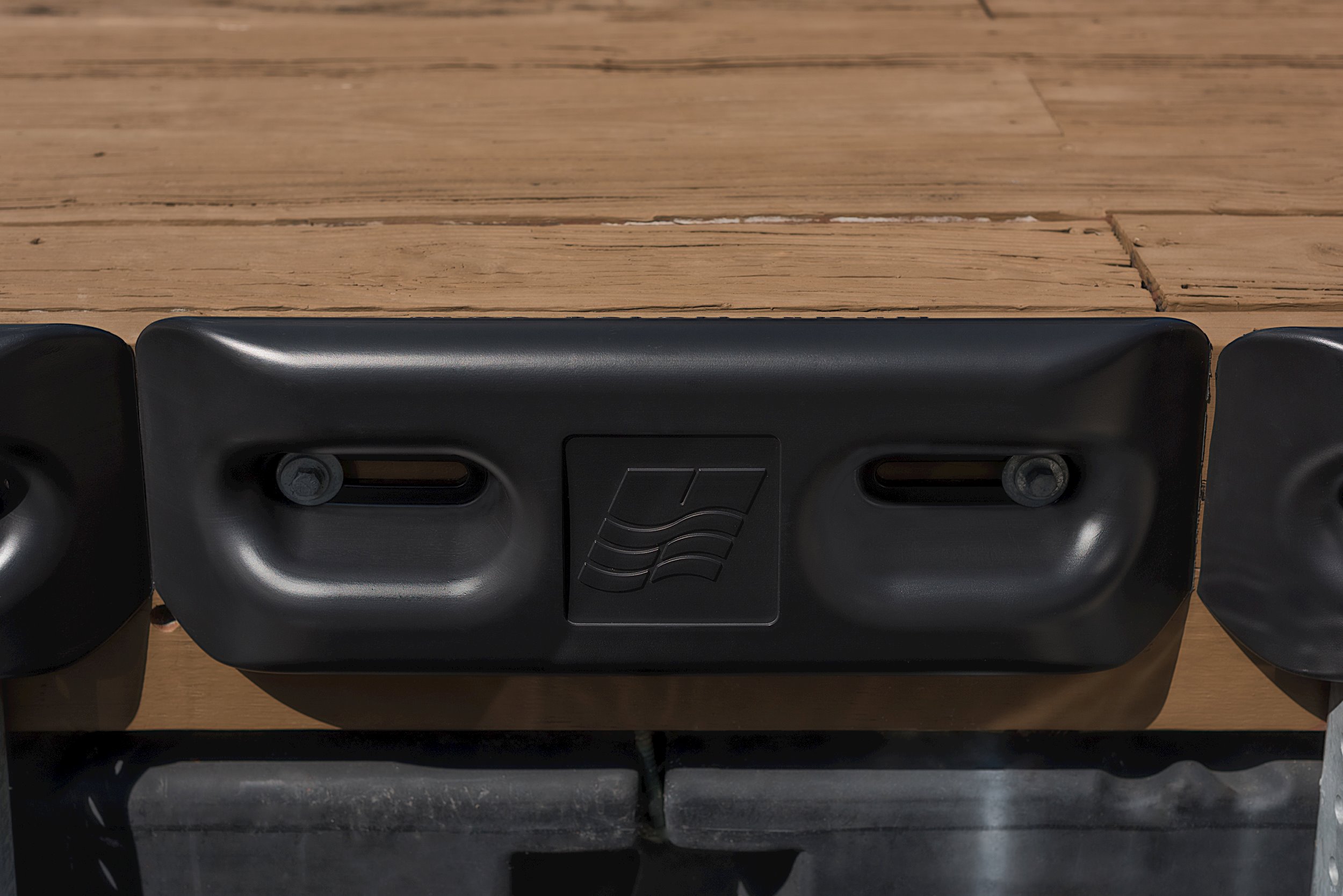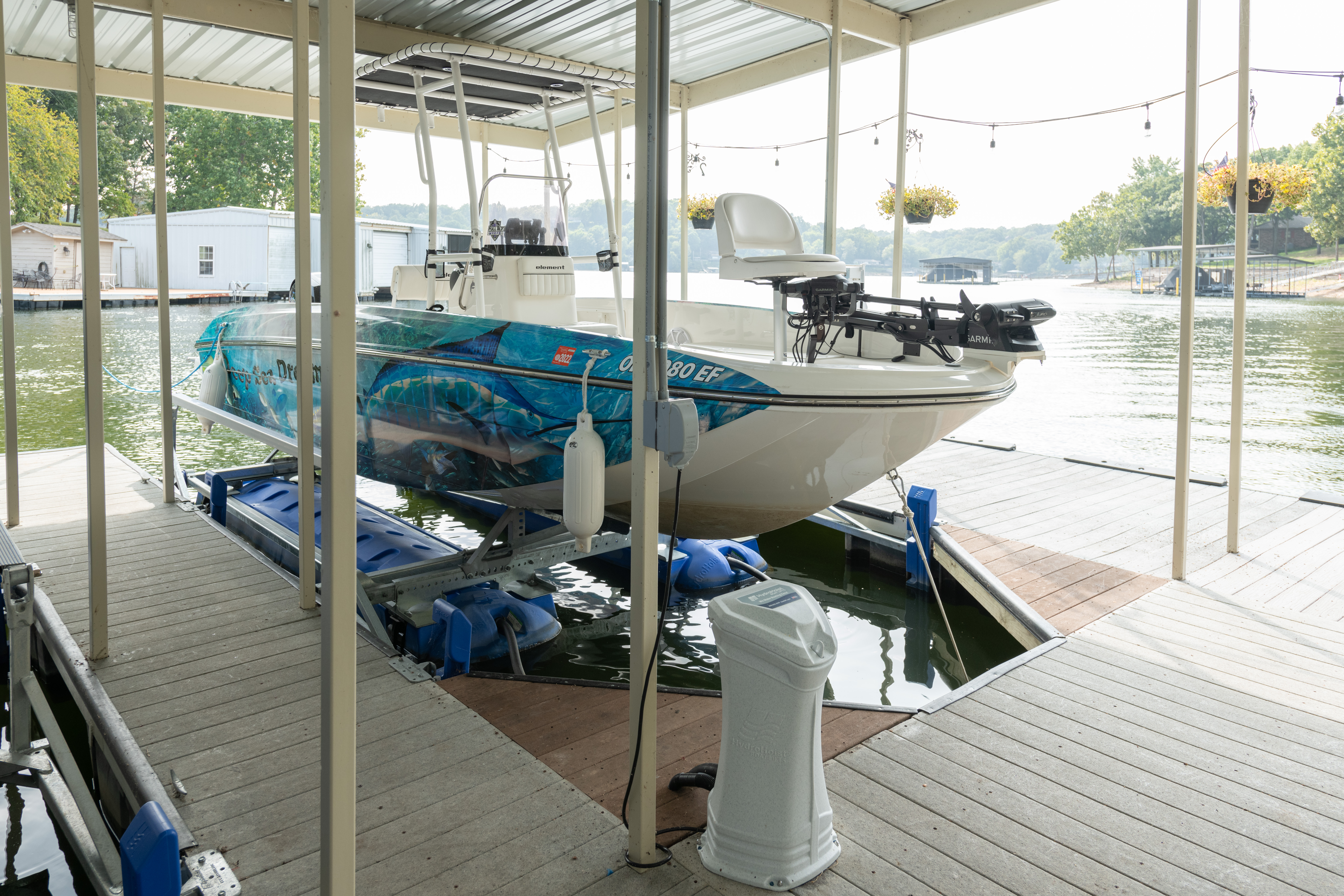Posted on March 1, 2016
Explore Your Boat Lift Options: A Guide to Choosing the Right Boat Lift
Written by HydroHoist Marketing
By Scott Mauldin, Regional Director, HydroHoist Boat Lifts
Whether you are a first time boater or an “old salt” there are three things that you are going to have to determine in regard to your new boat.
How do I maximize the time that I get to enjoy my new boat?
Where am I going to store my boat when I am not enjoying it?
How do I protect my investment?
For the boater that has the added benefit of a year round slip, the answer to all three of these questions can be found with a boat lift.
Storing your boat on a lift will give you the fastest access to the water. Launching your boat, right from your slip, will always be faster and virtually hassle free, when compared to either trailering your boat to a launch ramp, or getting your boat launched from dry-storage. An added benefit is that the hoist allows you to utilize your boat slip, in most applications, for year round storage of your boat.
Nothing will protect your investment like a boat lift. When not in use, your boat is resting high and dry – above the water – avoiding marine grown, osmosis, and electrolysis. A boat that is on a lift will also avoid banging against the dock as the result of a loose or broken rope.
Regardless of what type of boat slip that you have, whether it is in a marina, community dock, or a private slip, there is a boat lift that will fit just about every application.
Boat lifts fall into three main design categories: floating, bottom standing, and suspended. The type of dock construction that you have will determine the best boat lift design fit your application. It is possible that some docks may be suitable for more than one boat lift design, however in most instances there will be an optimum solution.
Other things that you have to consider when choosing a boat lift are permitting requirements, HOA restrictions, and any regulations that your marina may have in regard to attaching equipment to the dock structure.
Typically floating boat lifts are the best choice for floating docks and fixed docks that are in deep water. Floating docks will rise and fall on par with any change in the water level. The advantage to the boater is the dock has a constant freeboard that allows for easy access to board the boat. Floating boat lifts also fluctuate with the dock and prevent the dead weight of the boat from being placed on the floating structure.
Bottom standing boat lifts are normally the best choice for fixed docks that are in shallow water. Suspended hoists will most often be found on fixed docks with moderately deep water.
There are several things that you need to determine about your dock and slip that will help you to choose the boat lift design that will be the best fit for your application.
-Is your dock fixed or floating?
-Does your dock have a roof structure? If so, is it high enough to allow for your boat to be lifted out of the water? If it is a fixed dock, is the roof structure strong enough to support a suspended boat lift, including the live weight of your boat?
-Is your dock structure sturdy enough to support the installation of a boat lift?
-What is the water depth in your slip? Is it deep enough for the boat lift structure to submerge enough to launch your boat? This depth will vary depending upon whether you wish to pull your boat into your slip; or back your boat into your slip.
-Is anything present in your slip that might affect the operation of a boat lift? (Winch stands, cables, underwater brace, etc….)
-What is the length and width of your boat slip? Compared to your boat, is the slip long enough and wide enough to accommodate the installation of a boat lift? This will vary depending upon the length and beam of your boat.
-Is electricity – needed to power the boat lift – available on your dock?
-Is any permitting required for the installation of a boat lift? (This is especially important when having additional spud poles installed for a suspended lift.)
Although your dock design will play the most major role in determining what type of boat lift will be the best fit, you will also want to consider the water conditions as well.
- Is your dock in fresh water or salt water? Warm salt water is much more corrosive than cold salt water.
- Is the water activity around your dock mild, moderately rough, or severely rough?
- How active is electrolysis in the water around your slip?
- How much, how often, and how quickly does the water level at your dock fluctuate?
Once you have chosen the boat lift design that best matches your dock, you will need to supply your boat lift professional with your boat information so that they can recommend the correct hoist model to properly support your boat.
- What is the exact year, make, and model of your boat?
- What is the length and beam of your boat?
- What type of hull does your boat have? (V-hull, catamaran, pontoon, tritoon, etc…)
- What is the live weight of your boat?
Don’t confuse the manufacturer’s listed dry weight with the live weight of your boat. Dry weight is exactly that. To determine the live weight of your boat, you have to factor in all of the dealer prep items, such as the battery and fire extinguishers, and also any gear that you are going to store on the boat (life preservers, wakeboards, water toys, fishing gear, etc.). In most cases if your add 10% to the listed dry weight it will cover the items that you store on the boat. You also need to add the weight of the fuel and fresh water, as well as any water that may be in the holding tank or live wells. If your boat is a wake boat that is equipped with ballast tanks, it is recommended that these tanks are always emptied prior to storing your boat on any boat lift.
- You will need to determine whether or not you wish to pull the boat in forward or back it into the slip. This is very important as it will determine where the boat lift is placed in the slip, and it can also affect the parts that are used to assemble the boat lift.



